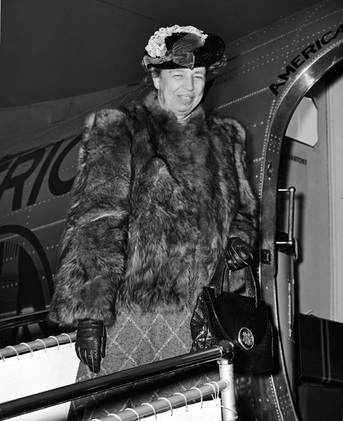|
J. William T. "Bill" Youngs, Eleanor Roosevelt: A Personal and Public Life, Chapter Ten
|
"Eleanor Roosevelt interviews John F. Kennedy" courtesy of Brandeis University
|
The thing which counts is the striving of the human soul to achieve spiritually the best that it is capable of and to care unselfishly not only for personal good, but for the good of all those who toil with them upon the earth.
- Eleanor Roosevelt, The Forum
- Eleanor Roosevelt, The Forum
Author reads from the Text
After Eleanor's death the extraordinary character of her life became all the more apparent. Not only was she once of the most influential people - man or woman - of the twentieth century, she also possessed a remarkable ability to "walk with kings and keep the common touch." She could be as friendly to a soldier in a hospital as to the Queen in Buckingham Palace; and she could involve herself in important administrative business, such as chairing the UN Commission on Human Rights, yet still spend hours writing letters to strangers who wanted her advice or comfort. The epitaphs written to her over the years are extraordinary in their consistent veneration. "Because of her life," wrote William Chafe, "millions of others may have experienced a new sense of possibility." Adli Stevenson declared, "She would rather light a candle than curse the darkness, and her glow has warmed the world." A wonderful Herblock cartoon shows a cluster of cherubs in heaven looking shyly from behind their clouds at an approaching stranger. Awestruck, one of them remarks, "It's her..."

